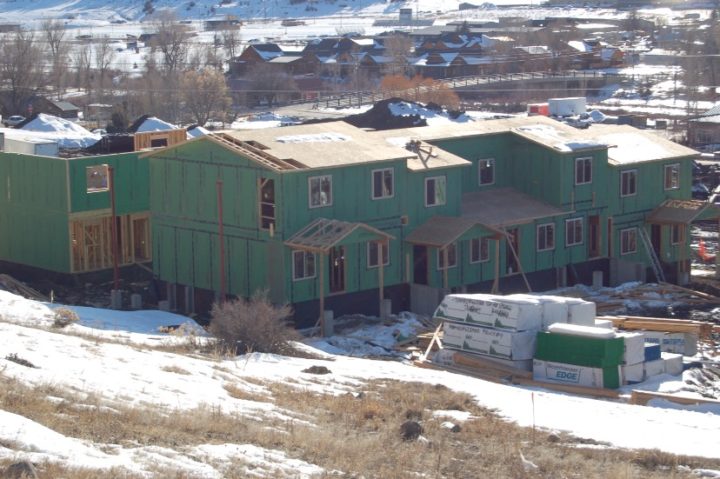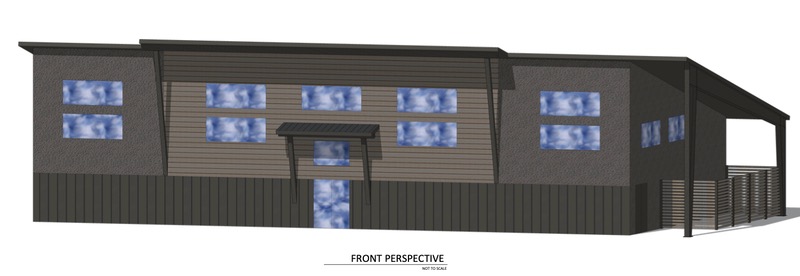My hat is off to the Pagosa Springs Town Council and the Town staff for proposing a sixteen-unit workforce housing apartment building at the corner of Apache and South 5th Street.
And I’m impressed that Town Planning Director James Dickhoff spent 40 minutes, on February 2, explaining his concerns, and fielding questions, around a somewhat vague proposal to create a ‘Tiny Homes Park’ development somewhere within the town limits. I call it ‘vague’ because the location and size of the proposal was not revealed on February 2, nor has the developer officially submitted an application to the Planning Department.
But the agenda packet for the meeting did present the Council with a list of possible ‘regulations’ that could be applied to future ‘Tiny Home Parks’.
- Since the PUD purpose is to increase choice of living and housing environments, Prohibition or Restrictions on Short Term Rentals with a focus to provide long term workforce housing could be considered. Otherwise, the development may really end up being a lodging establishment or second home development.
- Increased buffering/screening requirements between neighboring properties.
- All site development standards should still be required: sidewalk connectivity, paved roads, drainage, landscaping, etc, similar to requirements for all other developments.
- Design standards for the Tiny Home appearance within the development? For example limiting metal siding, use of multiple siding materials, architectural detailing, etc.
- Development could include storage facilities to ensure personal items are not stored outside.
- HOA or park developer should be main point of contact for violations.
- Skirting the Tiny homes should be required to conceal wheels and trailer frame and serve as insulation for year-round utility connections.
- Utilities within development installed constructed for year-round use.
I don’t want to dig too deeply into these possible limitations and requirements. To a common citizen, they probably sound rather reasonable.
My concern stems from my assumption that most of these these limitations and requirements will, in fact, be considered by the Town Council, if this Tiny Home Park moves forward. I can explain.
During the six months that I served on the Town Planning Commission, I participated in the approval of some intelligent planning proposals. But one particular decision stands out in my mind. We were asked to consider an industrial building — a metal building — in an industrial subdivision on Gold Mine Drive. The building looked very similar to a half dozen other metal building in the same subdivision.
But the Town Planning Director, James Dickhoff, was not satisfied with the design, because, among the hundreds of building requirements that the Town government enforces on people trying to build a home or business, we find this set of regulations in the Land Use & Development Code:
D. Building considerations.
1. Building articulation. The perceived mass and scale of downtown development shall be reduced to achieve a human scale. This shall be accomplished by incorporating a series of smaller design elements that are consistent with the development’s architectural character. Appropriate design elements for every development shall incorporate, but are not limited to, at least four (4) of the following:
a. Variations in roof form and parapet heights;
b. Pronounced recesses and projections;
c. Wall plane off-sets;
d. Off-sets to accommodate outdoor gathering spaces;
e. Distinct changes in texture and color of wall surfaces;
f. Ground-level arcades and second or third-floor galleries/balconies;
g. Protected and recessed entries; and
h. Vertical accents or focal points.
When the building applicant presented his sketches of the proposed metal building, Planning Director Dickhoff determined that the “roof form” lacked “variation”.
In fact, this “roof form” was very similar to nearly all of the other existing “roof forms” in the same subdivision. But Planning Director Dickhoff made it clear to us that the aim of the Land Use and Development Code is not merely to ensure the health and safety of our citizens, but also to make all new buildings in the community look ‘better’ that older existing buildings. Not in so many words, but that was the general idea.
Of course, the usual way to make a building look more classy is to actually spend more money on building it. The Planning Commission, on the advice of the Planning Director, rejected the drawing shown above, and required the applicant to return with a new architect’s drawing showing “Variations in roof form.” The new design looked like this:
When I asked the applicant how much this roof form change was going to cost him, he stated, “$50,000”. Instead of purchasing a single metal building, he was now required to purchase three separate metal buildings, to create the required “variation in roof form”.
I felt some appreciation for that dollar amount, because the first house I bought in Pagosa Springs had cost me $52,000. We — the Planning Commission — had no idea how expensive our decision would be.
Yesterday in Part Five, we noted the relatively exorbitant cost of the Low Income Housing Tax Credit project currently under construction on Hot Springs Boulevard. We mentioned that the 34 low-income apartment units appear to be costing about $350,000 each.
There are several reasons why this ‘affordable housing’ project turned out to be so expensive to build. One reason is the “variations in roof form” that the Town Planning Department apparently required the architect to design.

There are numerous other reasons as well. Some of them are:
1. Building articulation. The perceived mass and scale of downtown development shall be reduced to achieve a human scale. …
b. Pronounced recesses and projections;
c. Wall plane off-sets;
d. Off-sets to accommodate outdoor gathering spaces;
e. Distinct changes in texture and color of wall surfaces;
f. Ground-level arcades and second or third-floor galleries/balconies;
g. Protected and recessed entries; and
h. Vertical accents or focal points.
I can understand if the well-paid employees who work for the Town government would like to see our community look more like an upper-middle-class town, with lots of roof form variations, and wall plane off-sets, and distinct changes in color and texture, and ground level arcades, and vertical accents.
I understand that our Town Council members may feel the same way. Most of our Daily Post readers might agree with that approach, as well.
But we are essentially destroying the town we fell in love with, by requiring it to become upper-middle-class.



